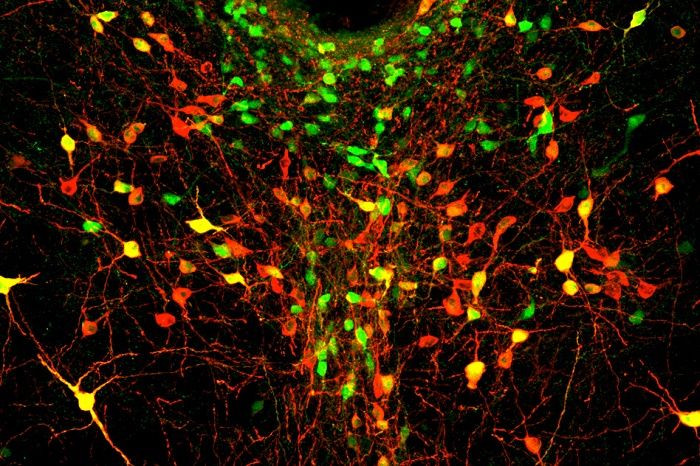Feeling Lonely? Certain Neurons Motivate You To Get Out There After Period Of Social Isolation

A new study published in Cell pinpoints where feelings of loneliness and emotional distress come from in the brain.
Study authors found a person’s increased need to interact with others after a period of social isolation can be attributed to a cluster of cells called the dorsal raphe nucleus (DRN), located near the back of the brain. Although many studies have shown how the brain seeks out and responds to rewarding social interactions, the authors said little is known about how isolation and loneliness motivate social behavior. They also said the DRN is a brain region that has not been studied much.
"There are many studies from human psychology describing how we have this need for social connection, which is particularly strong in people who feel lonely," Gillian Matthews, a postdoc at the Picower Institute and the paper's lead author, said in a statement. "But our understanding of the neural mechanisms underlying that state is pretty slim at the moment. It certainly seems like a useful, adaptive response, but we don't really know how that's brought about."
Matthews said she "first identified the loneliness neurons somewhat serendipitously"; she had been studying how drugs affect the brain's dopamine neurons. Instead of focusing on how drug abuse influences the DRN, she focused on social isolation in mice.
As part of the experiment, Matthews and her team isolated mice for 24 hours. They noticed the control mice, which had not received any drugs, had stronger neural connections in the DRN following the isolation period. Further study revealed these neurons were responding to the state of social isolation.
"DRN neurons are not very active," the authors wrote. "However, during a period of isolation, these neurons become sensitized to social contact and when the animals are reunited with other mice, DRN activity surges. At the same time, the mice become much more sociable than animals that had not been isolated."
When these neurons were suppressed using optogenetics, a technique that allowed the authors to control brain activity with light, they found that isolated mice did not show the same rebound in sociability when they were brought out from isolation.
"That suggested these neurons are important for the isolation-induced rebound in sociability," senior study author Kay Tye said. "When people are isolated for a long time and then they're reunited with other people, they're very excited, there's a surge of social interaction. We think that this adaptive and evolutionarily conserved trait is what we are modeling in mice, and these neurons could play a role in that increased motivation to socialize."
The study also found that animals with a higher rank in the social hierarchy were more responsive to changes in DRN activity. This suggests that the most social or popular people may be more susceptible to feelings of loneliness following isolation.
"The social experience of every animal is not the same in a group," senior study author Kay Tye said. "If you're the dominant mouse, maybe you love your social environment. And if you're the subordinate mouse, and you're being beat up every day, maybe it's not so fun. Maybe you feel socially excluded already.”
Researchers say the next step is to figure out whether DRN neurons actually detect loneliness or are responsible for driving the response to loneliness.
Source: Matthews G, Nieh E, Weele C, et al. Dorsal Raphe Dopamine Neurons Represent the Experience of Social Isolation. Cell. 2016.



























